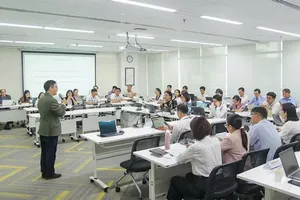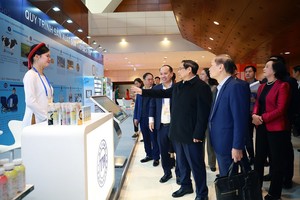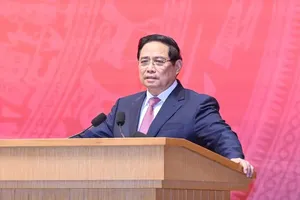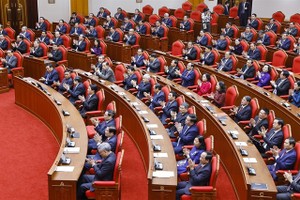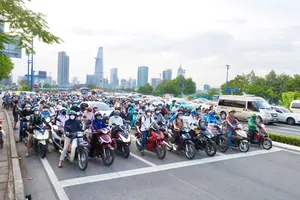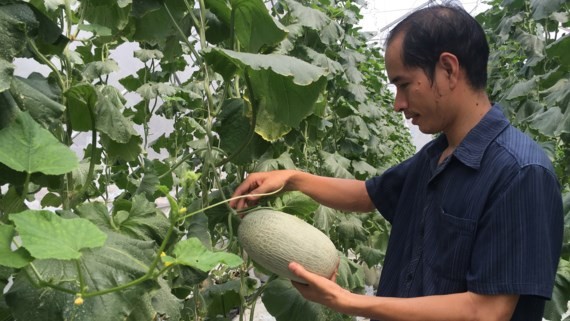
After conducting a pilot program to grow 30 varieties of muskmelon from other countries, HCMC Agricultural Hi-Tech Park (AHTP) has chosen four varieties suitable with the climate in the southern region of Vietnam, where can cultivate four crops a year with each crop lasting 2-2.5 months.
Farmers can grow 2,500-2,700 plants per 1,000 square meters during dry season and 2,200-2,500 plants during rainy season. This yields about 21,000 muskmelons weighed 1.5 kilogram each. A kilogram has been priced VND24,000 at fields.
In HCMC, about 30 households have developed over 40 hectares of the fruit meeting a small part of domestic consumption demand. About 15,000 tons are imported from China a year.
Largest farming areas are in Hoc Mon and Cu Chi districts. An economic cadre in Cu Chi said farming area has increased day by day mainly by export firms in the district. In Nha Be, two businesses have invested in about four hectares for export.
Khang Nguyen Company, specializing in seed supply, said that incorrect export information has led many people to grow muskmelon.
Still, many farmers have not applied hi-tech farming measures, resulting in low quality fruits which were sold at markets in the city at the price of only VND17,000-18,000 a kilogram at the end of May.
Surveys by the company show that muskmelon area is estimated to near 200 hectares in the southern region.
Mr. Do Viet Ha, deputy head of HCMC Agricultural Hi-Tech Park, said that muskmelon price approximates $8-10 a kilogram in the Japanese market while it is only $3 in Vietnam. So businesses can earn much profit from the fruit's export. However their supply has been unstable because farming area has been expanded while quality has not been equal with only one third of the fruits in a hectare.
Muskmelon supply is usually short in most countries during winter months, causing high import demand during this time. Therefore, authorized agencies should plan the fruit’s farming zones, scales and areas to meet export demand and prevent uncontrolled farming expansion from causing oversupply and price drop.



